One of the largest and most populous cities in Spain - Zaragoza - is not known to all tourists, but among the inhabitants of the country this city is known as one of the most beautiful and ancient. And not in vain, because almost every building and structure in Zaragoza is a kind of monument, an architectural masterpiece, an unusual attraction that reflects the features of many temporary eras.
Zaragoza is a unique city that contains the culture of several countries and eras. When traveling in Spain, you should definitely visit this city - you can get to it from Barcelona or Madrid by any mode of transport: plane, train, bus or car.
Those who have been to Zaragoza remember more cities that resemble the setting. , and , really complement the picture of the old streets and the spirit of the city that goes back centuries.

The Basilica de Nuestra Señora del Pilar is not just a sacred temple and the main attraction of the city, but also an important historical and architectural monument of Spain. The temple is the largest in Zaragoza and one of the largest and most beautiful in all of Spain. Every year, a huge number of tourists make a pilgrimage to these places - only Santiago de Compostella is a more popular place in Spain.
The temple was built in honor of the Virgin Mary and is considered the first in the world dedicated to her. According to legend, more than two thousand years ago, on the banks of the Ebro River, the Mother of God appeared to a praying saint with instructions to build a church on this site. In the near future, her instructions were carried out. The temple survived many events, several destructions and reconstructions, which left its mark on its architecture and design elements.
Every autumn, on October 12, the city hosts a large-scale festival dedicated to the Virgin Mary. This period is called fiesta and lasts 9 days, filling the streets of the city with fresh flowers, musicians, street actors and dancers.
In the period before the fiesta in honor of Our Lady of Pilar, it is worth booking hotel rooms in advance, because the number of tourists staying these days just rolls over.
The address: Plaza del Pilar, s/n
Working mode: Tue - Sun - from 7:00 to 20:30
Price: is free.
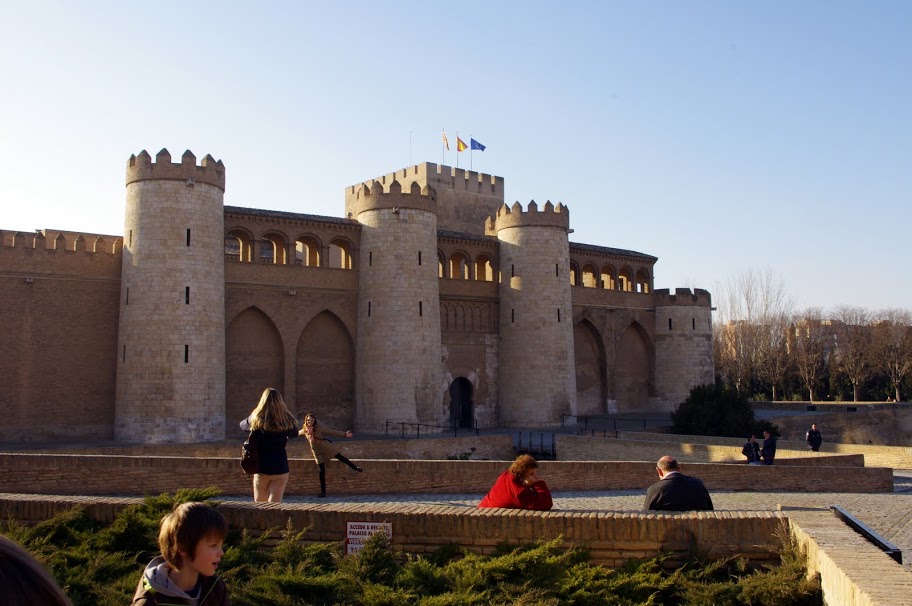
The Aljaferia Palace is a unique historical monument, one of the few buildings that has been preserved since the days of Muslim rule. It was built in the 11th century as a residence for Muslim rulers. The architecture of the palace surprisingly combines elements of two different cultures - Arab and European.
The palace in the past served as a fortress, which left an imprint on its appearance - thick and durable walls give it severity. You can get inside only through one entrance - it leads to the internal buildings and courtyards of the castle. Most of the area is occupied by green spaces and tangerine trees, which surround the halls located inside.
The most beautiful rooms are located in the northern part of the castle - this is the Golden Hall, the mosque, the chapel, the royal chambers. Tourists will be interested in each of the halls, as they are a surprisingly luxurious and rich spectacle.
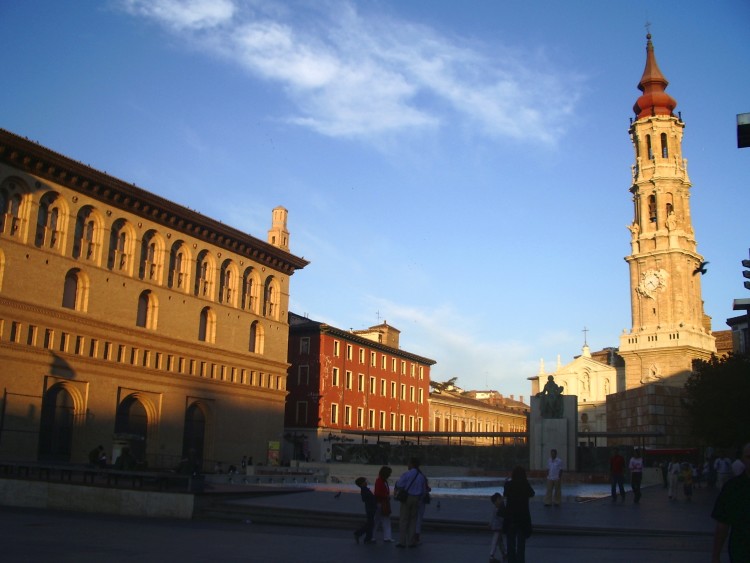
The history of Zaragoza is such that many historical monuments preserved in it reflect elements of culture that are completely different from those familiar to the West. The Cathedral of La Seo is no exception - it was originally built by the Arab conquerors as a mosque and has retained some of this architecture to this day. Another name for the cathedral is San Salvador. It houses a local shrine - the grave of Archbishop Oscar Romero, who was killed during the civil war.
The appearance of the cathedral amazes and attracts tourists, but the real spectacle awaits them inside the building: vaulted ceilings, walls decorated with gold and painted with frescoes, and sculptures that outstanding masters worked on in their time. In general, the architectural style of the cathedral, like many buildings of medieval times, is a mixture of several elements. This is baroque, and classicism, and Gothic and Romanesque styles.
Zaragoza is one of the few cities in which the competition of two cathedrals for the title of cathedral led to the assignment of this status to both temples. The Cathedral of La Seo shares this title with the Cathedral of Del Pilar.
The address: Plaza de la Seo, 4
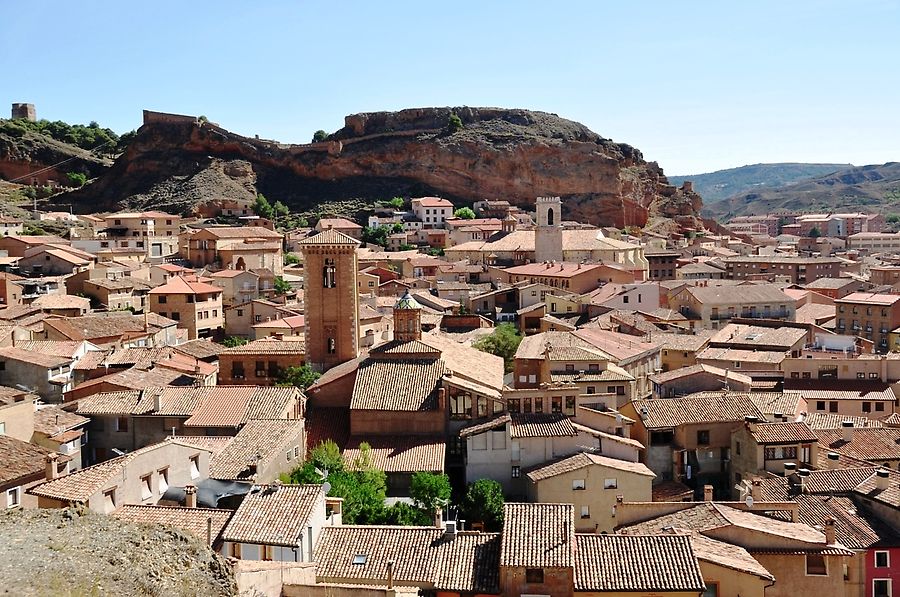
A small town on the outskirts of the city of Zaragoza - Daroca, with a population of just over 2,000 people, allows tourists to immerse themselves in ancient times for at least a few hours and take a break from the bustle of Zaragoza. The city is also part of the Moorish heritage, and around it are ruins that were once huge, powerful fortifications. The roofs of the city and its location fit so well into the surrounding landscape that it is difficult to distinguish them from the surrounding area.
The city is ideal for tourist walks, relaxing holidays and enjoying historical sights. There are very few permanent residents in it (mostly they come here only for one season), so Daroka is a quiet and peaceful place, devoid of fuss and noise.
Through the narrow streets of the city, you can get around the many pastry shops - this type of industry flourishes here, as well as visit the beautiful Gothic church and several restaurants serving unusual local dishes.
A beautiful love story is also connected with the city: according to legend, the ghost of a beautiful girl, once thrown into a well by a jealous husband, still roams its streets.
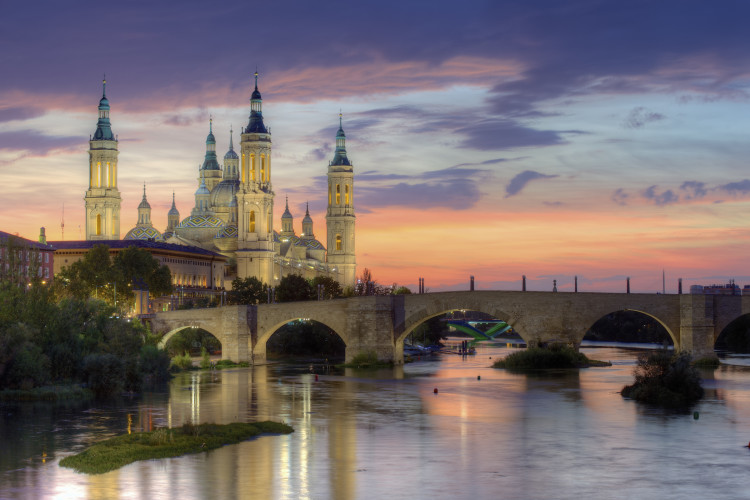
Since Zaragoza is located near the Ebro River, the bridge connecting its two banks and located in the center is an important part of the city. There are footpaths and tram tracks on it, and from the bridge to the main sights of the city - a stone's throw.
The significance of the bridge is also related to the fact that many historical events took place on it - this makes the bridge a pride and an important asset of the city. The idea to build it arose as early as the beginning of the 12th century, since it was important for establishing trade and economic ties with other countries and cities. However, all the built bridges were destroyed over time: by floods and wars, and only the stone bridge has survived to this day. Thanks to him, the city continued to be supplied with food, water, various goods and maintain economic relations with other cities.
The second name of the bridge is Lion. This is due to the fact that on each of its sides on the columns there are sculptures of the symbols of the city - lions. The sculptures are made of bronze and made in 1991.
The address: Puente de Piedra
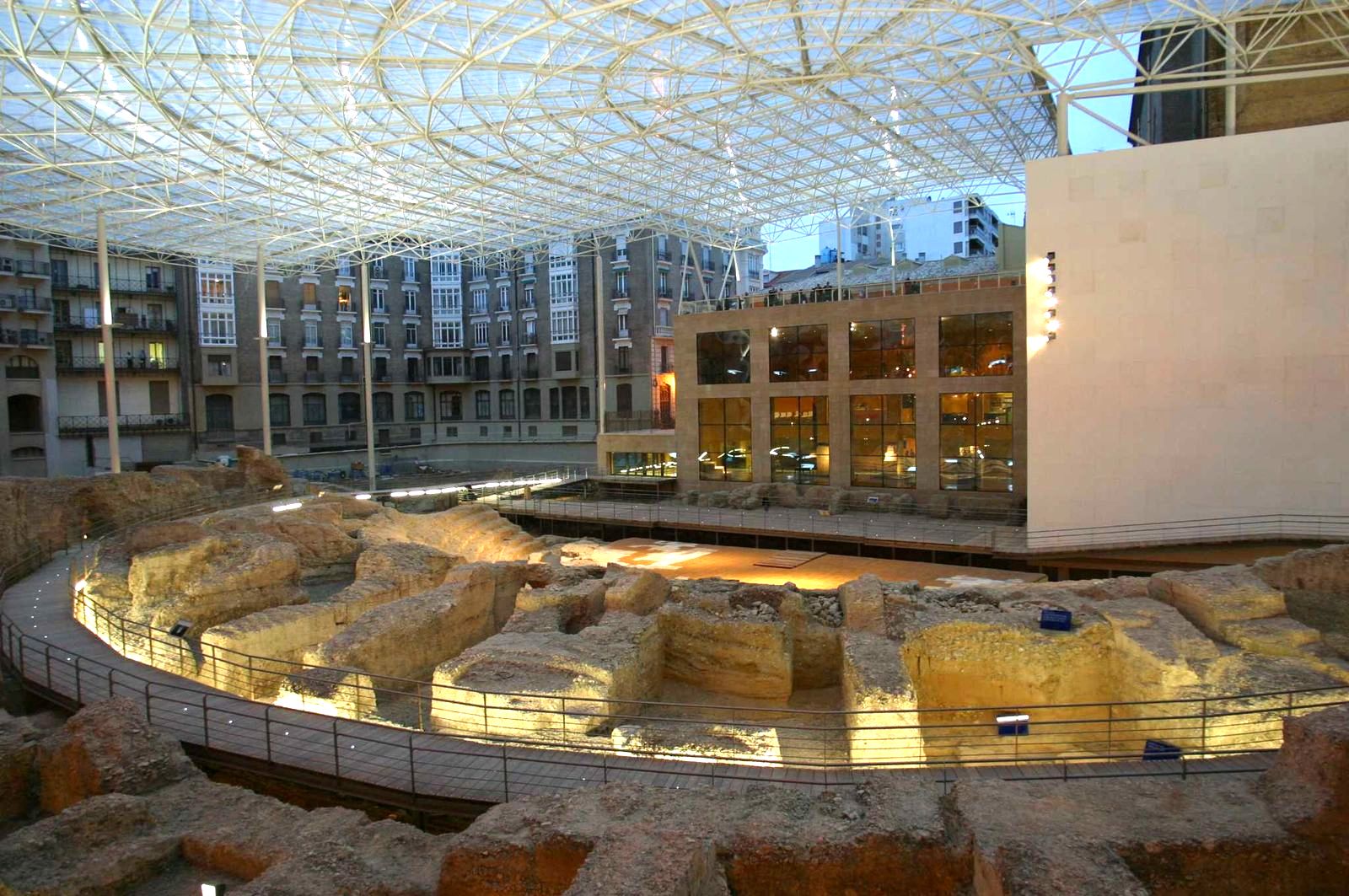
The city of Zaragoza was originally founded as a Roman city and was named after the ruler Augustus. Some elements of the Roman style have survived to this day - these are the remains of those buildings and structures that were built several centuries before our era.
The ruins of the Roman Forum were discovered during excavations and were united as a kind of museum, which everyone can visit. The museum consists of several parts: the forum, the theatre, the port and the thermae. Of course, nothing has survived in its original form, but next to each object there is a picture or photograph depicting exactly how this or that object looked in ancient times.
The museum presents unusual exhibits: there is a model of the Roman forum, exemplary examples of dishes of those times, water pipes, a sewerage system with a demonstration of the principle of its operation, and much more.
The address: C/San Jorge 12

On the territory of the Cathedral of La Seo there is another amazing attraction of the city of Zaragoza - the tapestry museum. As the name implies, the bulk of the museum's exhibits are fine carpets (tapestry), made mainly by Flemish craftsmen.
Most of the exhibits are huge and well preserved, despite the fact that they were made several centuries ago. The main time period for the production of all the presented tapestries is the 15th-18th centuries. Tourists are impressed by these works: it is hard to believe that they are all made by hand, without the use of modern equipment. The collection of this museum is one of the largest and rarest in the world.
In addition to tapestries, the museum has many other exhibits. These are mainly art objects with a religious theme, as well as beautiful decorations and sculptures.
The address: Plaza de la Seo, 4

In 1991, in honor of the 500th anniversary of the discovery of America, a beautiful symbolic waterfall appeared in Zaragoza. It is a split niche into which streams of water pour. The peculiarity of the waterfall is that the niche symbolizes Latin America - it is made in the form of a map of the mainland.
Next to the fountain is a stone sculpture depicting the globe, as well as three large marble slabs. Each of the plates is the ship of Christopher Columbus, on which he reached the shores of America.
The address: Plaza Nuestra Señ ora del Pilar
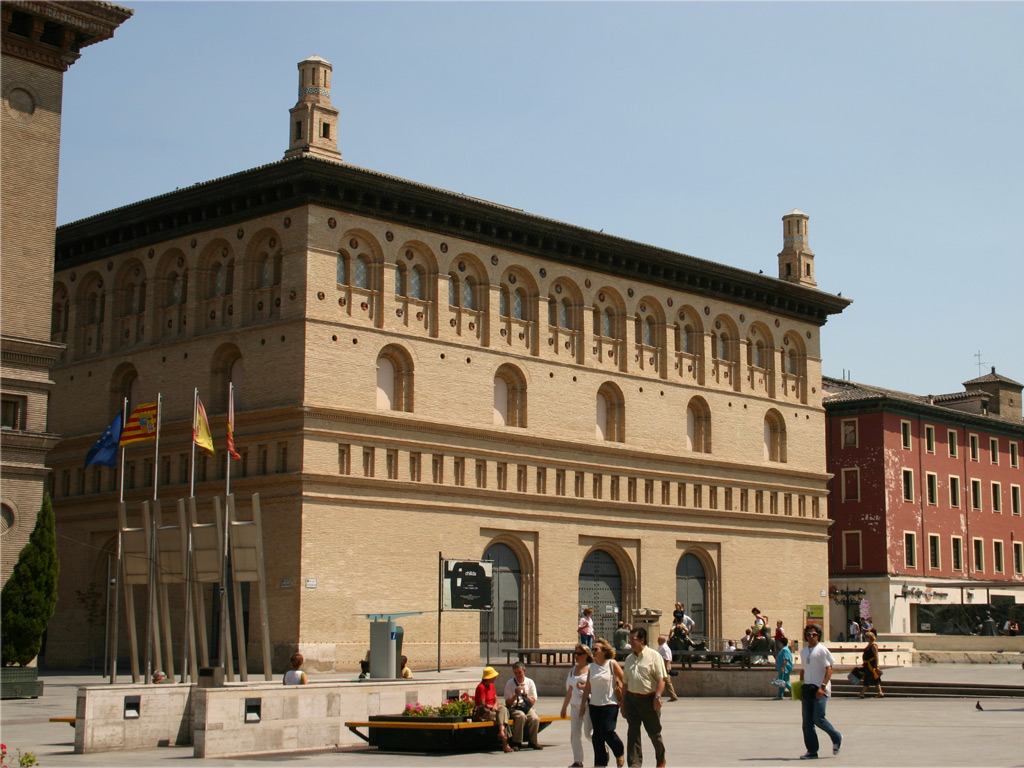
The Trade Exchange is another large historical building dating back to the 16th century. For the period of its construction, it was the largest construction project not only in the city, but in the entire district. Initially, the exchange was used for trading purposes, but now it only reminds with the beauty of its architecture of the old times and is a venue for many exhibitions. Mostly there are photographs and other artworks. You can visit such an exhibition every Sunday - it will be completely free.
Externally, the building is divided into floors, but the interior design is slightly different. It is a huge hall, which is divided by large ribbon columns. Gradually, these columns turn into an arched vault.
Zaragoza is an amazing city, which, due to historical features, combines elements of opposite cultures - Western and Eastern. Many of the city's main monuments also contain a similar architectural mix of styles, making them unusual and interesting for tourists.
Many of the most beautiful and historically valuable objects are located in the city center, so almost all the sights can be seen one after another - a stone bridge, cathedrals and temples, museums and fountains.
